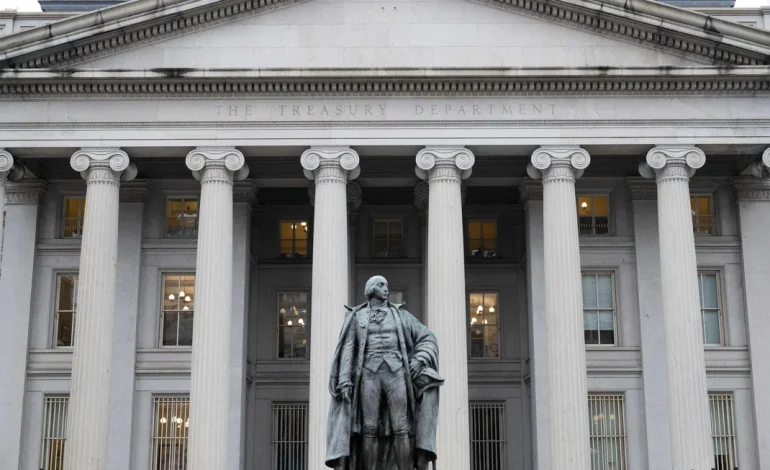US Treasury yields dipped slightly on Tuesday, reversing course after the 10-year yield reached its highest level in over two months during the previous session.
As of early Tuesday, the yield on the 10-year Treasury note fell by more than two basis points to 3.998%. Similarly, the yield on the 2-year Treasury decreased by 5 basis points to 3.949%. It’s important to note that yields move inversely to prices, with one basis point equating to 0.01%.
On Monday, the 10-year yield exceeded 4% for the first time since August, closing at 4.024%. This increase followed stronger labor market readings, even as the Federal Reserve began its rate-cutting campaign last month. The 10-year yield experienced a significant rise from its 2024 low of approximately 3.58%, which was reached a little over a month ago. The yield on the 2-year Treasury also increased on Monday, climbing nearly 6 basis points to 3.989%.
Investors are now looking ahead for further indications regarding the future of interest rates, particularly with upcoming comments from policymaker Adriana Kugler. The recent uptick in yields is linked to a robust September jobs report that prompted investors to reassess expectations for the Federal Reserve’s rate adjustments this year. Following this report, traders have increased their bets on a potential quarter-point rate cut in November and December.
The rising yields are likely to exert pressure on both businesses and consumers, as the 10-year yield influences borrowing costs for a variety of loans, including mortgages, student loans, and auto loans. This situation leaves consumers facing higher costs for significant purchases.
“Investors are growing more confident in an outlook where job creation continues, growth remains robust, and inflation moderates more slowly,” Karl Schamotta, chief market strategist at Corpay Cross-Border Solutions, noted in a Monday report.
Consequently, the Fed is now perceived to be easing its policy at a more gradual pace than anticipated just a week prior.
This week’s economic data, including the Consumer Price Index report for September and wholesale inflation figures, could further inform investors about the Fed’s potential direction on interest rates. Although inflation has cooled enough for the Fed to prioritize employment, concerns linger that a still-strong jobs report could hinder progress toward the Fed’s 2% inflation target.
CNBC, Market Watch, CNN contributed to this report.









